TL;DR: The top six things I’ve noted around housing, climate and poverty in Aotearoa’s political economy today are:
Transport and Energy Minister Simeon Brown is accelerating plans to spend at least $10 billion through Public Private Partnerships (PPPs) to extend State Highway One as a four-lane ‘Expressway’ from Warkworth to Whangarei by 2038, but he hasn’t included climate emissions costs in the plan or worked out the per-vehicle or per-kilometre cost for only lightly-used roads, which would be at least twice as much as Transmission Gully and three times the cost on some sections;
PM Christopher Luxon and Health Minister Shane Reti blamed a blowout in head-office and back-office costs in recent months at Te Whatu Ora-Health NZ to justify sacking its board on Monday and appointing Lester Levy as Commissioner, but Te Whatu Ora’s March quarter performance report (page 47) published this month specified higher-than-expected nursing hours, extra Holidays Act leave entitlements and higher pay equity and collective agreement pay increases for an extra $500 million in costs;
NewstalkZB host Mike Hosking turned on Luxon in a combative interview yesterday about the health cost increases, accusing Luxon of being too slow to recognise and deal with the problem, which Luxon responded to by saying: “Come on. Come on. Give me a break.”
In solutions news, the Commerce Commission proposed regulating and capping card payment charges in a way it estimated could save consumers and businesses $250 million a year;
In the Quote of the day on the eve of the historic release of the Abuse in Care Royal Commission report, Dr Rawiri Waretini-Karena describes via RNZ going through a “pipeline sweeping up and funnelling Māori children from state care to prison,”; and,
In our climate news graphics of the day, the European Union’s Copernicus climate data service reported overnight the global average temperature hit an all-time record high of 17.09°C on Sunday, July 21, beating the previous record of 17.08°C set on July 6,last year, and meaning average temperatures in each of the last 12 months have been at least 1.5 °C above pre-industrial levels.
(Full paying subscribers can see and hear more detail, analysis and commentary in my podcast above and below the paywall fold. They also get sent the full daily Pick ‘n’ Mix and Journal of Record emails. If we get more than 100 likes, we open these articles up for full public access and sharing online. Join our community of paying subscribers to also be able to comment and get access to our ‘Hoon’ webinars. Achievement unlocked!)
Top Six Things to note on July 16:
1. A highway twice as expensive as Transmission Gully
Brown kicks off $10b++ plan for PPP to build ‘Expressway’ to Whangarei
Without assessing the climate emissions costs or analysing the costs per km or per vehicle of 100 kms of new tarmac, Transport and Energy Minister Simeon Brown is forging ahead with a Transmission Gully-style PPP process to extend the four-lanes SH 1 all the way from Warkworth to Whangarei.
Brown announced the acceleration of the ‘Northland Expressway’ plan yesterday without stating the financial costs or giving any indication of the cost-benefit-analysis for the plan, let alone any suggestion he had considered the climate emissions implications. The words ‘climate’ or ‘emissions’ were not included in his announcement, or in the PDF of the Request For Proposal (RFP) issued by Waka Kotahi-NZTA through GETS and attached here.
NZTA described the project in the following terms in the RFP, including the map and timetable reproduced below:
NZTA is considering alternative ways to deliver a resilient highway from Warkworth to Whangārei (the Northland Corridor) that incorporates innovative procurement and alternative funding and financing approaches. Limited alternative connections between Northland and Auckland means the Northland Corridor must be resilient to minimise transport network vulnerabilities and support growth and development throughout the region.
As Northland’s economy is heavily supported by manufacturing, agriculture, and tourism, safe and efficient connectivity to Auckland is critical to connecting areas of production to key domestic and international markets.
This critical link currently lacks resilience (particularly at Dome Valley and the Brynderwyn Hills), has disproportionately high incidence of death and serious injury, and performs poorly against connectivity, congestion, and freight metrics. Significant investment is required to reduce risk of harm and death, improve corridor reliability, support both regional and national economic growth, and respond to the Government’s strategic priorities set out in the draft Government Policy Statement on Land Transport (GPS).
Over $10 billion of investment is proposed to upgrade the Northland Corridor to address these issues. Additionally, the New Zealand Transport Agency Waka Kotahi (NZTA) must also deliver a significant proportion of the $33.8 billion of roading investment in the New Zealand infrastructure pipeline within a labour and supply constrained market. Traditional approaches have had limited success in addressing funding and market challenges. NZTA RFP
But what would the true cost be?
Dileepa Fonseka did a great job this morning via BusinessDesk-$$$’s of delving into the potential true costs with Greater Auckland commentator Matt Lowrie, who noted a PPP prevented a future government from backing out of the project because it effectively locked spending up with a commercial contract.
Lowrie was also concerned about potential changes to the Public Works Act that might accompany the project.
“For local communities, particularly those who are either on or near the route … it suggests they’re going to try and take property without having to pay, or pay less.”
Lowrie said this cost was out of proportion to Northland’s population and not justified by the amount of traffic on the road, which he put at approximately 10,000 vehicles per day. However, he did accept the quality of roading infrastructure in Northland was poor.
“The question is, what would we be better to spend money on? $10b on a road to Northland or $10b on roads all throughout Northland that would improve all of them: improve safety, more passing lanes, easing corners, safety barriers, all those sorts of things.
“Spending that money on a wide range of projects would be a far better outcome for New Zealand and for Northland than one gold-plated highway.”
Lowrie pointed to cost estimates that emerged during the election campaign. These showed the Warkworth to Te Hana section alone could cost $4b to build and at approximately 26 kilometres, this would mean a build cost of $153.8 million per kilometre.
This was well above the per-kilometre cost of some other high-profile roads. Transmission Gully, for example, had an estimated $1.25b construction cost for 27km - approximately $46m per kilometre.
“The problem with this has always been the volume of traffic is very low, because Northland has a relatively low population, there’s not that much demand to justify a big four-lane expressway,” Lowrie said.
2. Health NZ’s cost surge not from head or back offices
PM Christopher Luxon and Health Minister Shane Reti baldly accused Health NZ and the previous Labour Government on Monday of presiding over wasteful cost blowouts in the new organisation’s back offices and head offices when justifying the appointment of Lester Levy as Commissioner to replace the board.
Levy also came out swinging yesterday in a news conference, describing Health NZ as ‘bloated’ and challenging criticisms by nurses, doctors and specialists that the sector was straining under the effects of decades of under-funding in real and per-capita terms. He said the health system had an abundance problem, not a funding shortage.
“Right at the moment, we don’t need more money, we just need to spend the money that we've got more wisely. And, you know, if I was the government myself, I would want to see evidence that we're getting value from the money that's been invested.
“But we have got a lot of resource. I know the scarcity and narrative of doom argument comes up a lot in healthcare. We’ve got in excess of $28b in revenue, we've got more than $25b of assets, we’ve got nearly 90,000 people.
“That sounds like, potentially, if you turn things around, that sounds like that could be an abundance issue if you just used everything properly.” Lester Levy in a news conference yesterday.
Really? That’s not what Health NZ said in its report this month
Luxon and Reti were much more political in their criticisms, laying the blame at the foot of the previous Government’s integration of DHBs into Health NZ, which Levy is now planning to devolve back out to four regional organisations.
But Health NZ has been very clear in recent months that the increase in costs above its budgeted levels of around $130 million a month was actually because of Holidays Act leave entitlements, new collective agreements with staff, pay equity increases and extra nursing costs because of extra hours being worked in jam-packed hospitals.
Either the minister or the PM wasn’t reading the reports, or they are misrepresenting the situation.
For example, Health NZ said in its March quarter report published on its website earlier in July (page 47) that it was having to use up its $409 million in year-to-date merger savings to pay for the staffing cost overruns early in 2024:
In March, nursing FTEs were greater than budget by 2,079 in the month and 878 year-to-date. Unbudgeted Care Capacity and Demand Management (CCDM) costs resulting in payment of higher-than-budgeted ordinary hours for nursing are the largest risk to achieving the desired surplus.
In addition, settlement of collective agreements above budgeted levels, unfunded impact of pay equity, and Holidays Act payments on leave revaluations, are also increasing pressure on the budgeted expenditure levels. Health NZ report.
Even then, Health NZ reported a surplus for the March quarter of $299 million, which was $300 better than budgeted, largely because primary health care spending and Covid 19 spending was less than expected. It also noted that capital expenditure was $892 million less than budgeted for and it expected full-year operational expenditure savings of $540 million.
Health NZ reinforced the spending increases were at the front line, rather than back offices or head offices, later in the report:
Over the last three months adverse financial performance has occurred, driven materially by an increase in ordinary nursing hours paid and an increase in leave revaluation costs above budget (driven by Holidays Act 2003 remediation payments and pay equity settlements). The savings generated (the $540 million mentioned above) need to be applied to these cost overruns.
3. ‘Tell you what mate! You were too slow’
Aside from the source of the cost increases, Luxon was also challenged on when he knew about the cost increases and why he hadn’t acted earlier in a particularly feisty interview yesterday with NewstalkZB host Mike Hosking.
Here’s the exchange after Luxon said around the 2 minute mark that the first signs emerged in October (the bolding is mine):
Hosking: Why when you knew something was awry in October are we sitting here in July only acting on it now?
Luxon: We got back into office obviously at the end of November.
Hosking: Why didn’t you do it January 5?
Luxon: We have had a series of escalations…
Hosking: A series of escalations at $130 million a month. January, February. March. April. May. June. One hundred and thirty times. You do the numbers. Why are you acting now?
Luxon: We are acting because we are getting it done. And we’re putting in place a commissioner who’s going to have…
Hosking: But why weren’t you doing it in January? February?
Luxon: We have.
Hosking: You haven’t
Luxon: We have been a bit late just before Christmas. In our first few weeks we put in a Crown observer.
Hosking: What? To tell you what you already knew? It was buggered then. It’s buggered now.
Luxon: You have got to have a bit more detail before you make a big change like we are doing and putting a Commissioner in. That doesn’t happen often. When you do that, you want to make sure you’re doing it right.
Hosking: Tell you what mate! If I arrived to run the country in October and somebody told me there was $130 million a month being lost, they would be sacked on the spot.
Luxon: We started in early December. You know that. We have worked our way through.
Hosking: I’ll give you this year. You have had seven months this year to do something. You’re supposed to be fixing this place up. You’re too slow.
Luxon: Come on, come on, give me a break. We’re moving at great speed. We’re putting in place a commissioner who’s going to have the power to get things sorted. We’ve hired more nurses than we’ve ever had in the last six months.
4. Solutions news of the day
ComCom plans to regulate card fees down by $250 million
It’s been encouraging to see the Commerce Commission push back in recent months against the oligopolies that layer extra cost into Aotearoa’s economy. The morass inside our card payments system has been problematic for decades.
Here’s more detail in the full consultation paper and in this interview with Chair John Small:
'Really quite annoying' - Paywave surcharges come under fire RNZ Checkpoint
5. Quote of the day
A funnel to the prisons
“When I walked into the prison yard for the first time as a teenager, having never been there before - I already knew 80 percent of the men in there. We'd spent the last 11 years growing up together in state care.
“That's when I knew there was a pipeline to prison; a pipeline that has spent decades sweeping up and funnelling Māori children from state care to prison.” Dr Rawiri Waretini-Karena via RNZ
6. Climate chart/graphic/pic of the day
Too hot, hot, hot…
For too long, long, long…
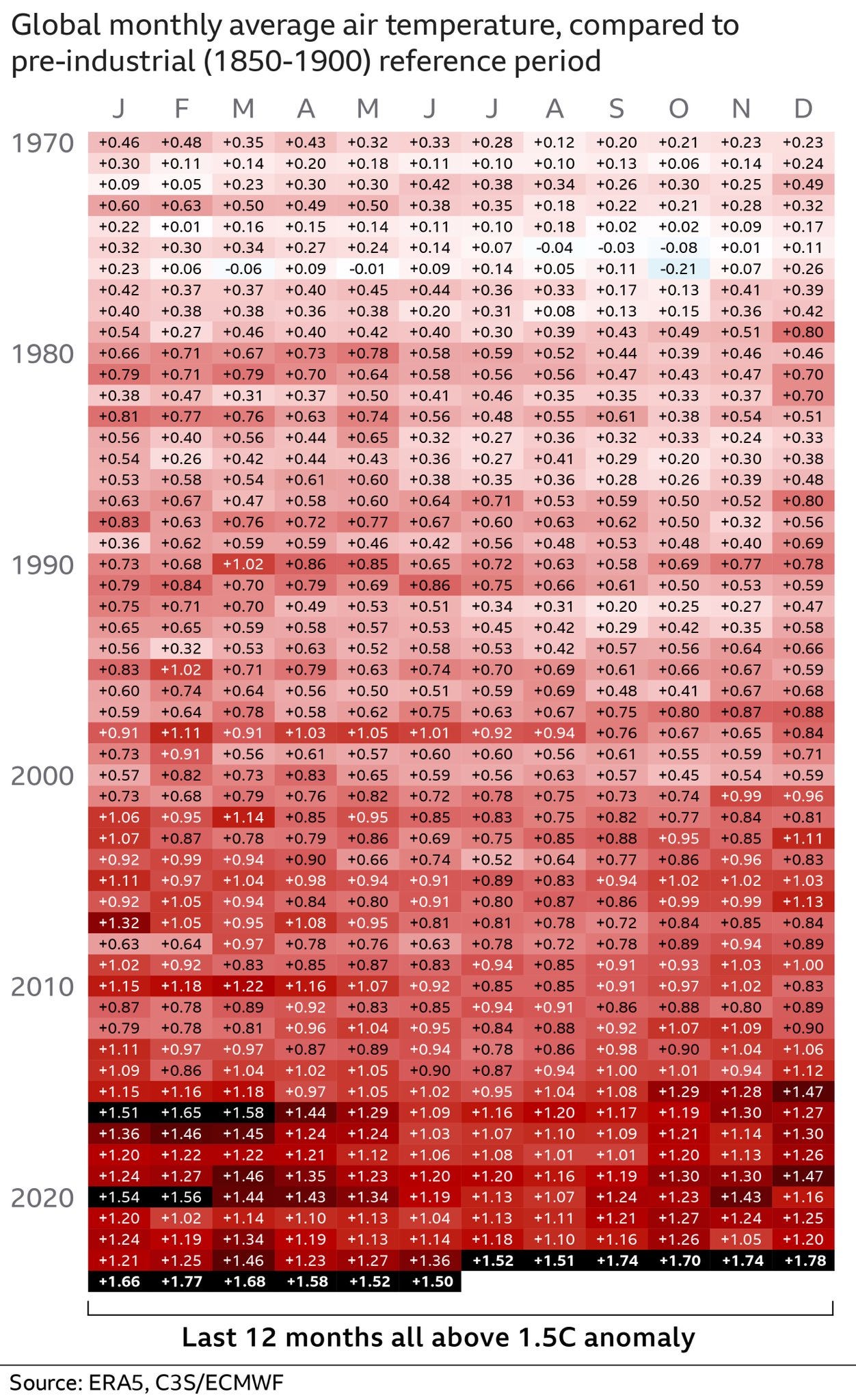
The best of the rest
Also, my Pick ‘n’ Mix for July 23 of the top six news, analysis, deep-dive and opinion links elsewhere include:
Deep Dive: Chipping away at the housing crisis, including my comments RNZ/Newsroom’s The Detail
News: Government softens on asset sales, promising to go to voters first NZ Herald’s Thomas Coughlan
Scoop: Visa delays cost cash-strapped Te Pūkenga tens of millions. More than 1000 international students were stopped from beginning their studies at the mega-polytechnic due to visa processing delays. 1News’ Maiki Sherman
Scoop: Legal action against Government 'possible' as officials warn deaths may rise under speed limit plans NZ Herald’s Thomas Coughlan
Deep Dive: Government agrees 'in principle' to $10b worth of Northland roading PPPs BusinessDesk-$$$’s Dileepa Fonseka
Op-Ed by Vic Uni Criminology Professor Elizabeth Stanley in Newsroom: ‘The least we should expect from final abuse in care report’
The Journal of Record today
Also, The Kākā’s Journal of Record for July 24 included these top six items:
Beehive: Transport Minister Simeon Brown announced plans to use PPPs to fund, build and run a four-lane expressway between Auckland and Whangārei as part of the Roads of National Significance programme. The RFP issued by Waka Kotahi-NZTA and attached below indicated a total cost of around $10 billion, starting next year and finishing by 2038. It included the map below.
Poverty: The Public Health Communication Centre released a briefing warning of a spike in whooping cough among NZ infants, with cases over tripling between April and June.
Costs of Living: The Commerce Commission announced a consultation on ways to reduce the cost of Visa and Mastercard payment fees to consumers and businesses, which it estimated in this briefing paper could be $250 million in excess of what they should be.
Verbatim: Full news conference video with Health NZ chairman Dr Lester Levy and CEO Fepulea’i Margie Apa talking about this week’s appointment of Levy as a commissioner.
Statistics: Stats NZ reported greenhouse gas emissions rose 0.5% in the year ending March 2024, although emissions from agriculture, forestry, and fishing fell 1.9%. Electricity emissions rose in the March quarter because more gas was burned by generators.
Climate: The International Council on Clean Transportation reported all new aircraft built from around 2035 onwards would need to emit net zero CO2 throughout their lifespan to meet the International Civil Aviation Organization's goal of net-zero CO2 by 2050.
And finally, some fun things
Cartoon of the day
Prices to be paid
Timeline-cleansing nature pic
Kotare VAR
Mā te wa
Bernard


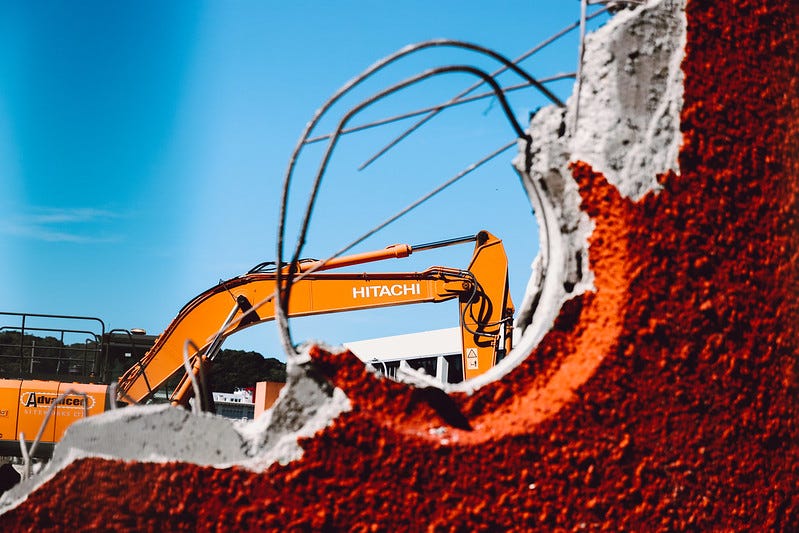
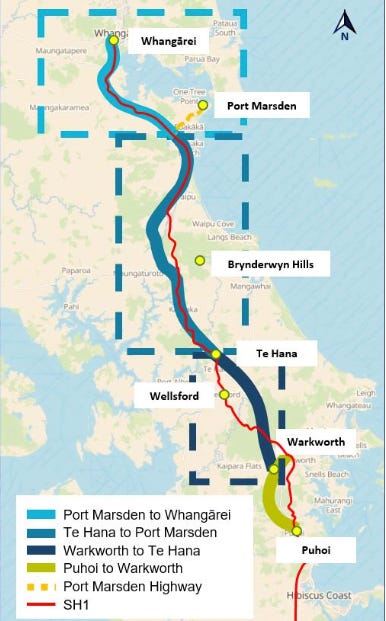
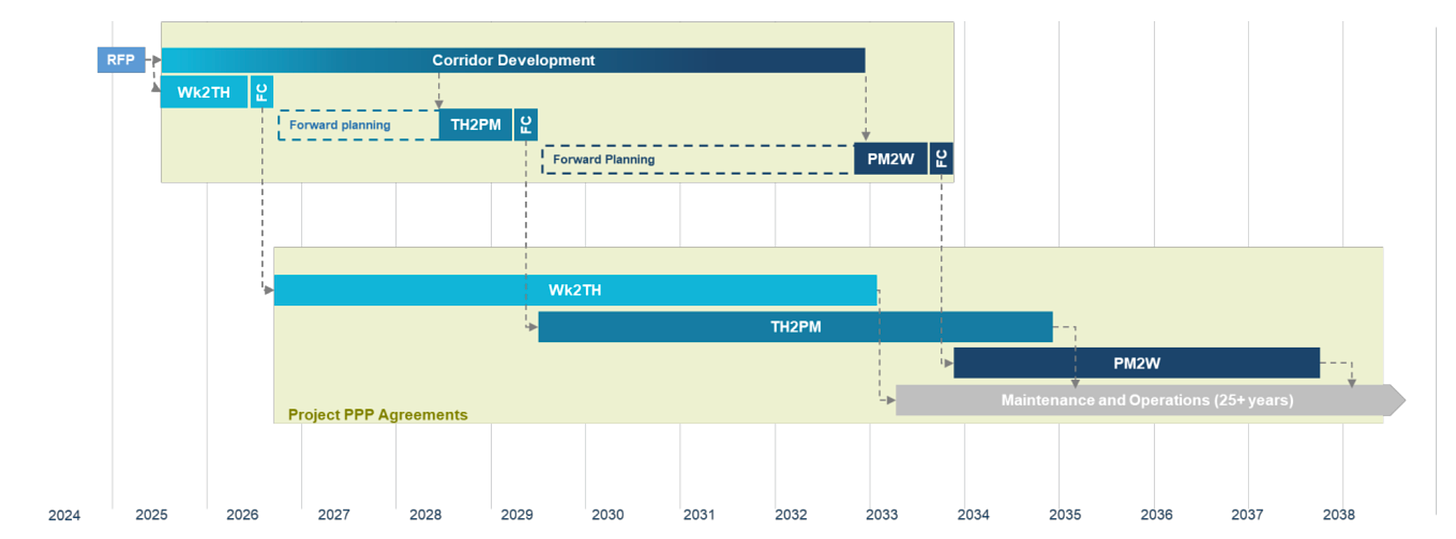
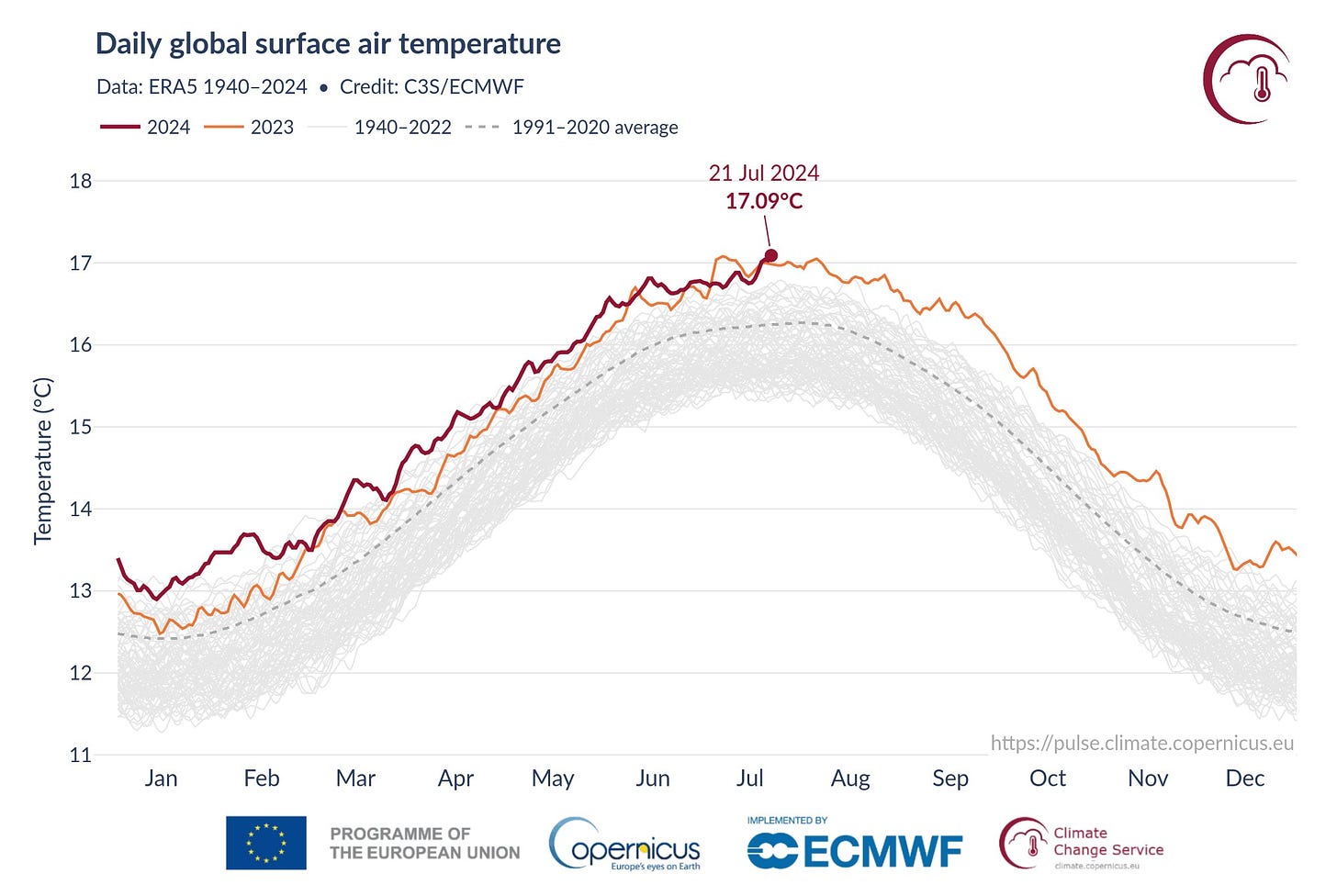
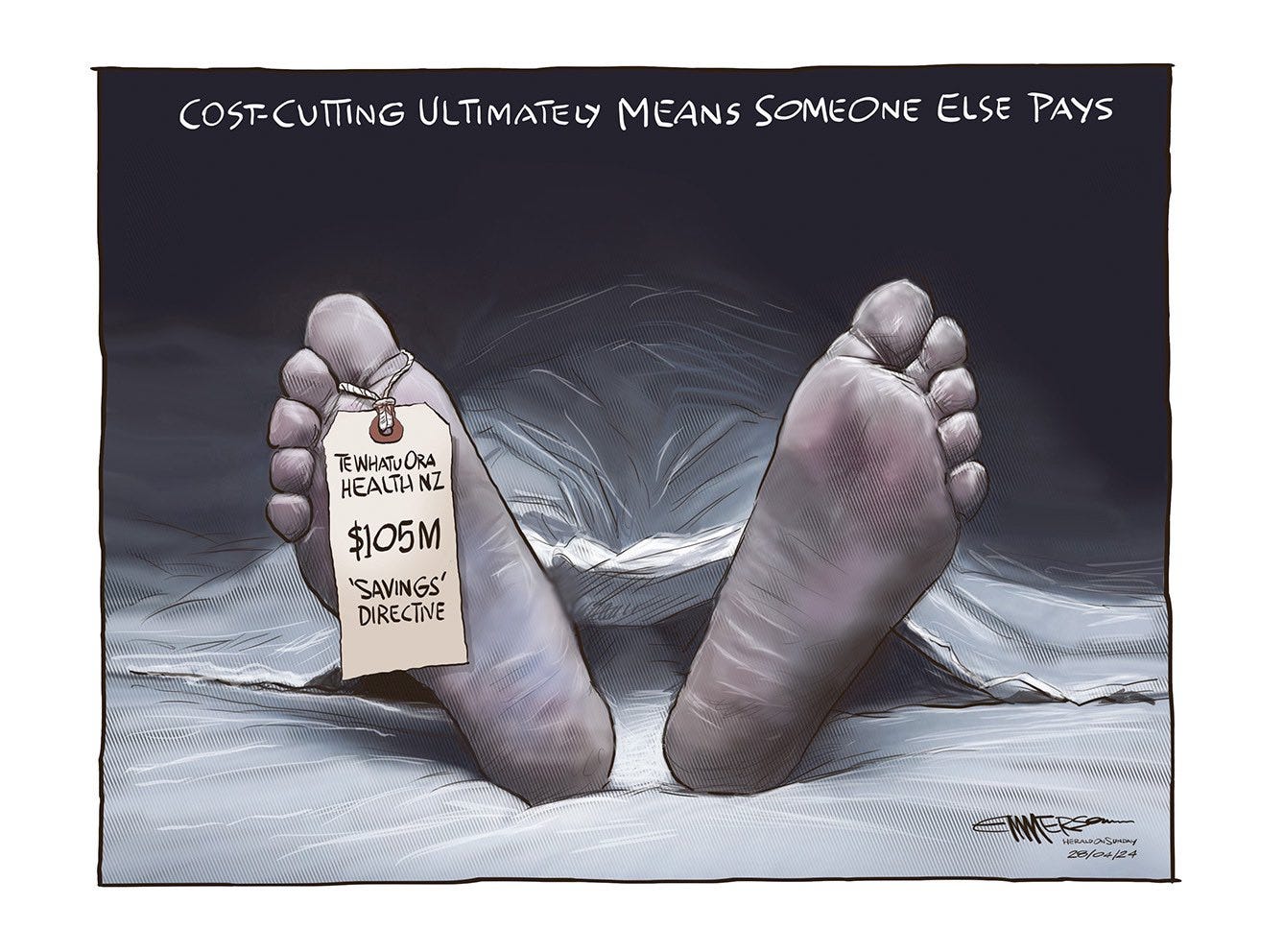









Share this post